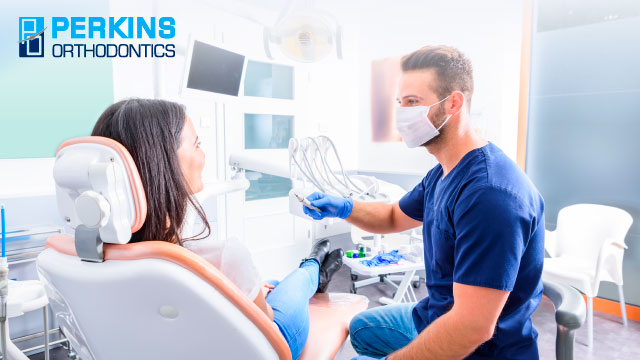Forth Worth Orthodontics: How to Find the Best Orthodontist and Types of Orthodontic Treatment

Orthodontic treatment plays a crucial role in enhancing oral health, dental aesthetics, and overall well-being. It focuses on correcting misalignments and irregularities of the teeth and jaws, leading to better function and an attractive smile.
The highlights of orthodontic treatment rely on some key aspects such as dental alignment, bite correction, speech improvement, enhanced aesthetics, and, last but not least, long-term dental health.
Orthodontic treatment aims to align teeth properly, addressing issues such as overcrowding, gaps between teeth, and crooked or rotated teeth. By achieving proper dental alignment, it becomes easier to maintain oral hygiene, reducing the risk of dental problems like tooth decay, gum disease, and bad breath.
Malocclusions, or bad bites, can lead to various functional problems. Orthodontic treatment can address these issues, including overbites (upper teeth protrude), underbites (lower teeth protrude), crossbites (upper and lower teeth don’t align correctly), and open bites (teeth don’t meet when biting). Correcting the bite not only improves the ability to chew and speak properly but also reduces the strain on the jaw joints and muscles, preventing temporomandibular joint disorders (TMJ).
Misalignments and malocclusions can cause speech difficulties, and orthodontic treatment can assist in resolving them. Orthodontists can correct impediments like lips or difficulty pronouncing certain sounds, leading to clearer and more confident communication.
Ultimately, by addressing dental misalignment and bite irregularities, orthodontic treatment can prevent or reduce the risk of future dental problems. Properly aligned teeth are easier to clean, reducing the accumulation of plaque and tartar and therefore controlling the risk of cavities and gum disease. A balanced bite distributes the forces of chewing evenly, minimizing the risk of tooth wear, fractures, and jaw pain.
What Do We Understand as Comprehensive Orthodontic Treatment?
What is comprehensive Orthodontic Treatment? – Comprehensive orthodontics refers to a thorough approach to correcting dental misalignments and bite irregularities. It involves a detailed assessment, diagnosis, and treatment plan to address a wide range of orthodontic issues comprehensively.
The process begins with assessment and diagnosis, with a comprehensive examination by an orthodontist. They evaluate the patient’s dental and facial structures, and take X-rays, photographs, and dental impressions to obtain a complete understanding of the individual’s orthodontic needs.
This assessment helps identify any existing dental problems, such as misaligned, irregularities, or skeletal discrepancies. After the assessment, the orthodontist develops a custom treatment plan for each patient’s specific needs.
The treatment plan takes into account the goals, the severity of the orthodontic issues, the patient’s age, and any potential constraints or limitations. It outlines the recommended orthodontic appliances, estimated treatment duration, and the expected progression of tooth movement.
Comprehensive orthodontic treatment may involve various orthodontic appliances depending on the patient’s needs. These can include traditional braces or clear aligners, functional appliances, palatal expanders, or headgear.
Your orthodontist will select the most appropriate appliances to address the specific misalignments, jaw discrepancies, and bite issues they identified during the examination/assessment.
After all that, the active phase of orthodontic treatment begins. This involves regular appointments with the orthodontist to adjust the appliances, monitor progress, and make any necessary modifications.
Only a licensed orthodontist can ensure that the teeth and jaws are gradually guided into their proper positions through the application of force.
Types of Orthodontic Treatments – What Are the Alternatives Available?
Orthodontic specialists categorize alignment treatment upon various factors like a patient’s age, types of appliances, malocclusion type, class, and severity.
The age perspective is led by a prevention approach or interceptive orthodontic treatment. This type of treatment focuses on children between the ages of 6 and 10 during the second dentition stage.
It aims to intercept and correct developing dental issues early, preventing them from becoming more severe in the future. Space maintainers, palatal expanders, or early braces are common appliances during this stage.
But adolescent and adult patients require a different approach. Statistically, teenagers represent the vast majority of orthodontic patients. It focuses on addressing a wide range of orthodontic issues, including misalignments and bite problems. Conventional braces and clear aligners are the favorite appliances for this phase.
Although some adults think adolescence is the last chance to align your smile, adult orthodontic treatment is possible and crucial. Adult orthodontics may involve metal braces or clear aligners to correct misalignments, close gaps, and improve the overall alignment of the teeth. It can address aesthetic concerns as well as functional problems.
Types of Orthodontic Appliances According to Malocclusion Classes
- Traditional braces: These are the most common orthodontic appliances consisting of metal brackets and wires. They apply gentle pressure to move teeth into new positions gradually.
Conventional metal braces, or their variants, ceramic braces, and lingual braces, are the most versatile and effective orthodontic appliances to date. They work for younger patients and adults, and they are the safest shot when it comes to severe malocclusion types, such as class II and class III malocclusion.
- Clear Aligners: These are the second most popular and comfortable option. Clear aligners are removable, nearly Invisible plastic trays that are custom-made to fit over the teeth. Clear aligners like Invisalign offer a discreet and comfortable alternative to braces, especially for mild to moderate orthodontic issues.
Clear aligners are proven effective in correcting class I malocclusion and mild to moderate class II malocclusion. Sadly, not every patient is a candidate for clear aligners treatment because, despite their high level of effectiveness, some dental issues require stronger pressure to correct.
What Are the Different Types of Orthodontic Appliances?
We can divide orthodontic appliances into two categories – Functional appliances and orthodontic devices.
Functional Appliances
- Twin Block Appliance: This appliance consists of upper and lower plates that work together to reposition the lower jaw forward, helping to correct class II malocclusions (overbite).
- Herbst Appliance: It is a type of fixed appliance that helps correct overbite by stimulating the growth of the lower jaw while restraining the forward movement of the upper jaw.
- Mandibular Anterior Repositioning Appliance (MARA): This appliance helps treat overbite and class II malocclusions by advancing the lower jaw and guiding its growth.
- Bionator Appliance: It is a removable appliance that encourages proper jaw growth and alignment by repositioning the lower jaw and guiding facial muscle development.
Orthodontic Devices
Besides the two conventional orthodontic devices for teeth straightening, there are others as helpful and crucial:
- Retainers: After orthodontic treatment, retainers help maintain the correct position of teeth. There are removable and fixed retainers.
- Palatal Expander: This device widens the upper jaw by applying gentle pressure to the palate. Orthodontists often use it to address crossbites or overcrowding.
- Headgear: Headgear is an external appliance that uses straps and wires attached to braces or a head cap to exert pressure on the teeth and jaws, primarily to correct overbites.
- Temporary Anchorage Devices (TADs): These are like mini orthodontic implants. The device consists of small titanium screws. The screws go temporarily into your jawbone to ensure proper anchorage.
There are many other specific orthodontic appliances and devices available for various dental conditions. Consulting with an orthodontist is essential to determine the most suitable treatment plan and appliance for a patient’s needs.
Finding the Best Orthodontist Near Me?
You have to consider many factors to find the best orthodontist in Forth Worth. How near or far the dental office from your area is key to ensuring you comply with all your dental appointments and in case of an orthodontic emergency.
Training and Qualifications
Look for an orthodontist who has completed a recognized dental program and who is a specialist in orthodontics. They should have a license to practice orthodontics in your area.
It takes many years of preparation at dental school and orthodontic residency before a doctor can lead a patient’s orthodontic treatment. Their general reviews and education should be transparent-clear.
Experience
Seek an orthodontist with significant experience in treating various orthodontic conditions. A practitioner who has been in practice for several years has expertise in a wide range of cases and knowledge in handling different situations.
This has nothing to do with the age of your doctor. Younger orthodontists can also have lots of experience and are usually familiar with the latest technologies, which is an important plus.
Specialization and Areas of Expertise
The best orthodontists have comprehensive knowledge and proficiency in multiple orthodontic areas.
Look for an orthodontist well-versed in traditional braces, clear aligner therapy, functional appliances, surgical orthodontics, and other treatment techniques.
Continuing Dental Education
A top-notch orthodontist stays updated with the latest advancements in the field. They attend continuing education courses and conferences to enhance their knowledge and skills, ensuring they provide the most effective and up-to-date treatments.
Dr. Evan Perkins attends conferences yearly with the AAO (American Association of Orthodontics) and the Saint Louis University Orthodontic Education and Research Foundation (OERF).
Affiliations and Certifications
It looks good for an orthodontist to affiliate with reputable professional organizations, such as the American Association of Orthodontics (AAO) or equivalent national organizations.
These affiliations demonstrate their commitment to professional excellence and adherence to ethical standards.
Patient Reviews and Recommendations
Check online reviews and seek recommendations from friends, family, or your general dentist. Positive testimonials and word-of-mouth referrals can provide valuable insights into an orthodontist’s reputation and the quality of care they provide.
Also, consider the comfort and rapport you feel with the orthodontist and their staff.
What Are Orthodontic Emergencies?
Minor emergencies often involve discomfort or inconveniences that can be temporarily managed until you can see your orthodontist. Examples include a loose or irritating wire, a loose bracket, or a mild sore spot. Your orthodontist can provide you with dental wax to solve this issue.
Real emergencies are more serious and may require immediate professional assistance. These include severe pain, significant injuries to the mouth or face, or major appliance damage.
In such cases, it is crucial to contact your orthodontist immediately to prevent further complications.
Orthodontics Near Me, Forth Worth
Find the best dental care in Forth Worth, Texas, by scheduling an appointment with our team!


